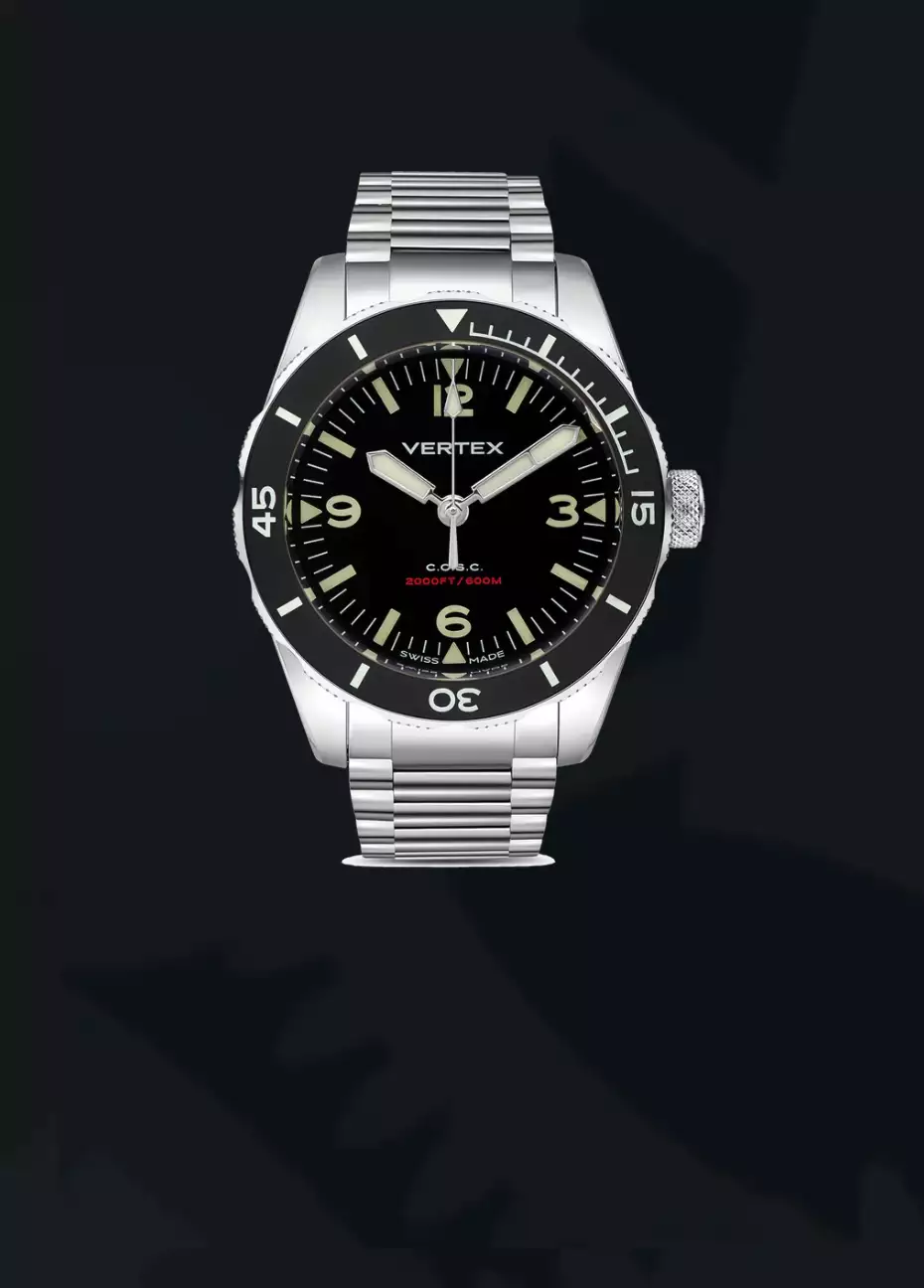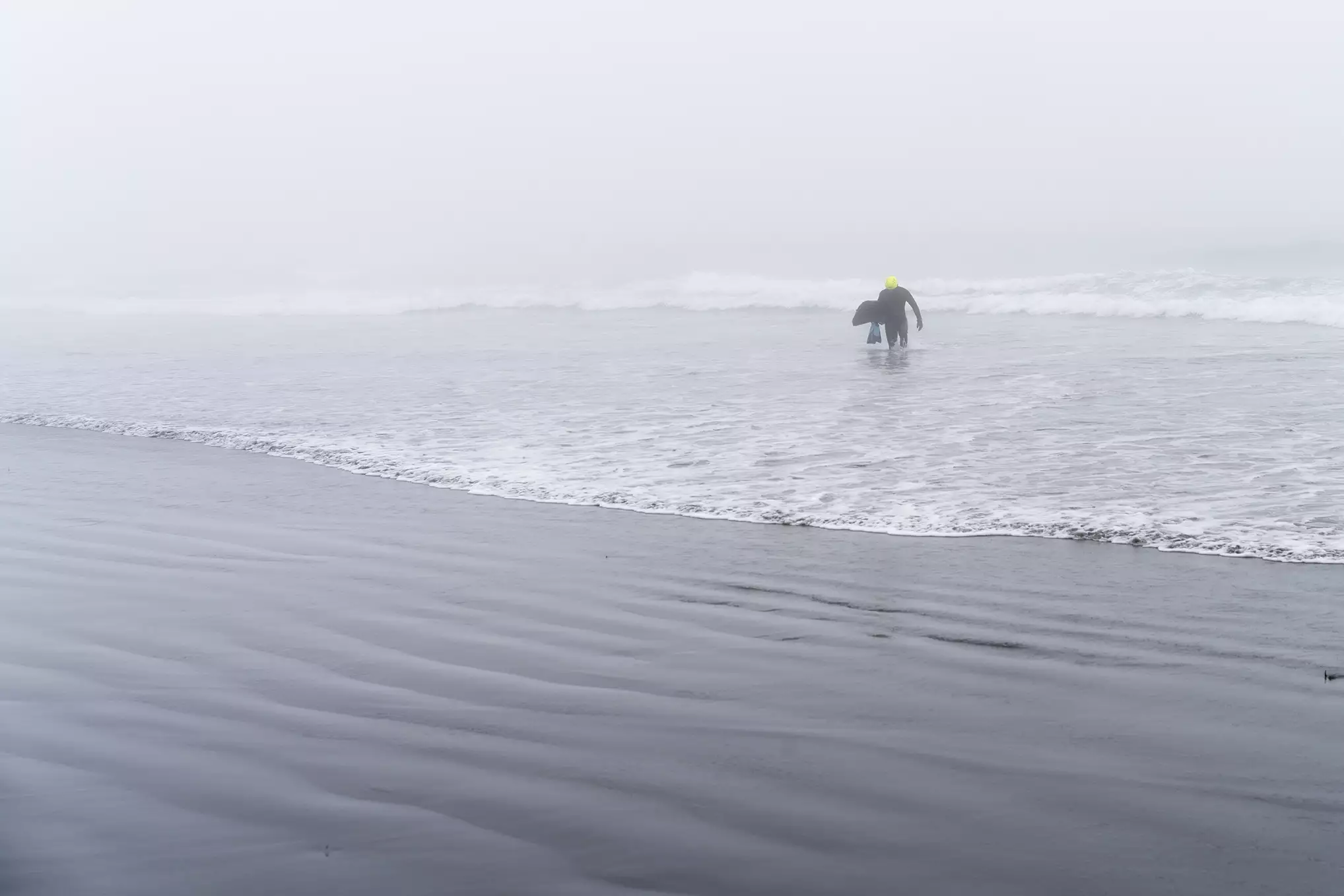
I’ve been obsessively refreshing the Magic Seaweed app for weeks now hoping the swell would change. Inundating my friend who lives a few hundred yards from the beach with calls and texts to see if just maybe the app was lying and there really were waves. Hopeful, but unfruitful. Finally yesterday after more than a month there were waves, big, but crumbly and disorganized. Wind blew on shore off the Atlantic knocking them down and destroying their shape. An optimistic drive over yielded only another day on dry land. Today the wind has dropped off, and the rain is gone. The waves are cleaner, if still a bit unorganized and slightly smaller. Wild swings in the temperature have caused sea fog to form a barrier hanging over the still frigid Gulf of Maine making the waves nearly invisible from shore. Shadows can be seen consistently marching into the water though. It’s not the best surf, or the best day to do it. But it’s surf, and the neoprene clad will not be denied any longer.
Surfing is not only done standing up. Out of the limelight exists a variety of alternative surf styles. Some are more well known like bodyboarding (aka “boogie boarding.”) Some are known but not really understood like body surfing (watch Kalani ride Jaws, Dirty ol’ Wedge, or Come Hell or High Water for a mindblowing perspective on bodysurfing). And some, like mat surfing, barely register with people. Even board surfers often give a chuckle the first time they see a surf mat. In fairness a surf mat does look like a pool toy at first glance, and decidedly uncool looking. Pioneered by the Australian’s with the “Surf-O-Plane” in 1930’s. Mat surfing involves a short inflatable mat, roughly the length of a riders upper body & hips, and a set of swim fins. The combo allows a mat surfer to power their way out through the breakers to the lineup, and then gain the necessary speed to catch a wave to ride. Once on a wave, a good rider (see Andrew Buck flying in CA) can often gain more speed on a mat than a board surfer can flying down the line eye level with the ocean.
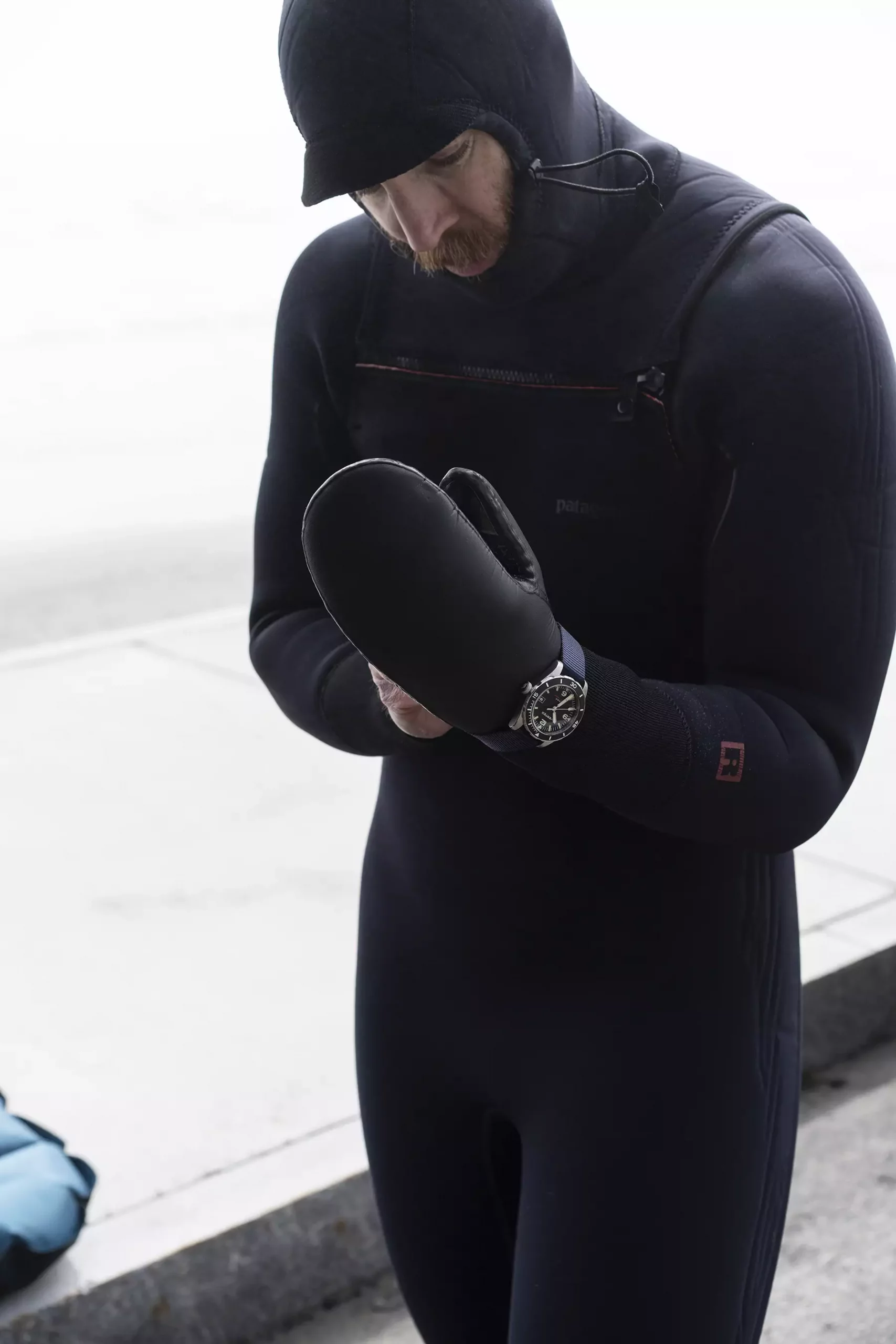
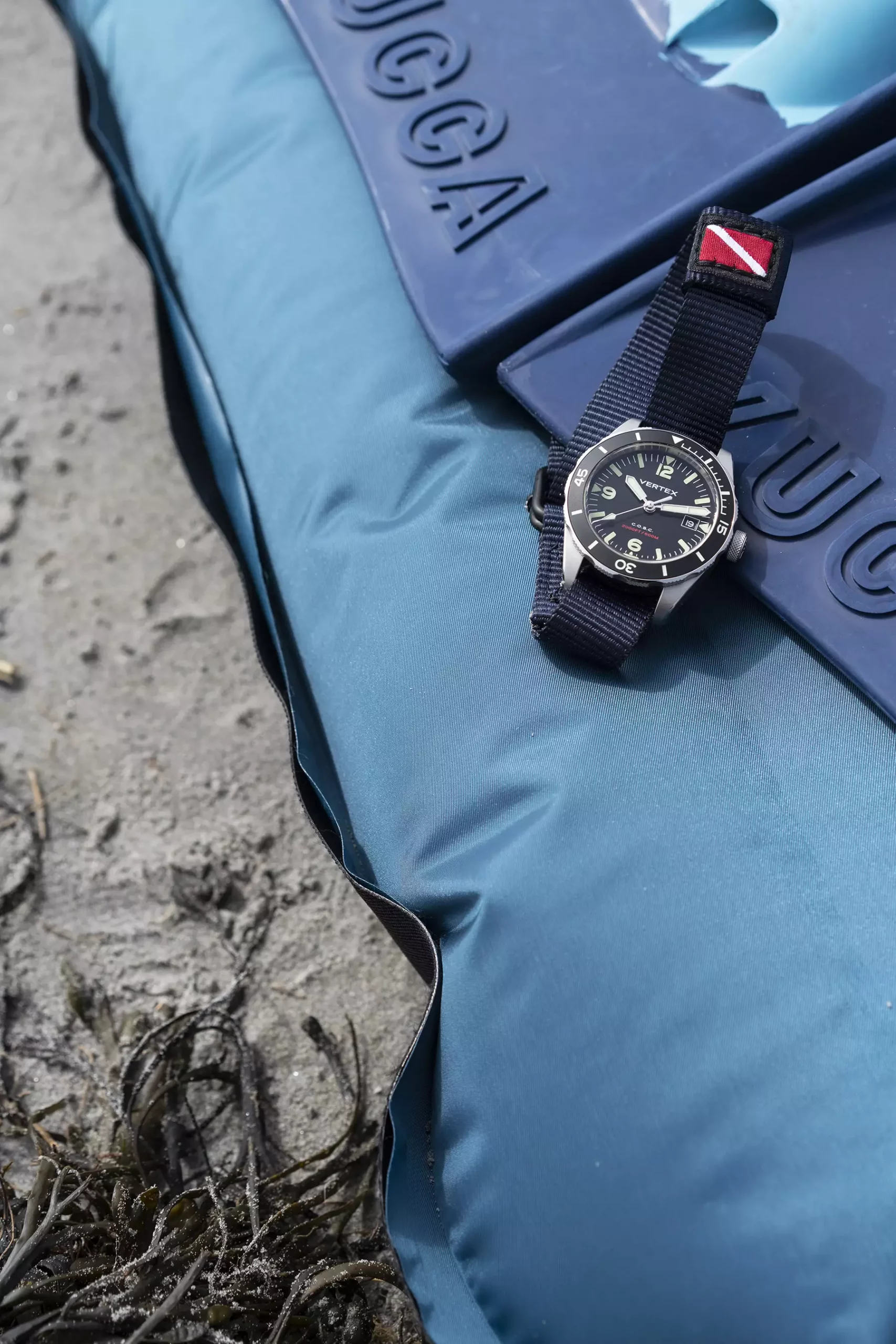
One good session on a surf mat is enough to hook someone, and have them scrambling to find a mat of their own. Mats are not really commercially made. While their popularity, and the demand, has skyrocketed over the last few years, the makers remain few and far between. Most have long wait lists, paused ordering all together to catch up with overwhelming demand, or offer orders on a lottery basis for a couple mats every few months. (Watch enthusiasts can empathize.) One of the best makers in the world is Graeme Webster in Cornwall in the UK. A surprising surfing locale with a thriving scene. Each of his mats are tailored to the rider, their surf preferences, and the kinds of waves they typically ride. Each earns a nickname upon leaving his workshop, and often a wild custom grip paint job to match. His work has continued to push the mat surfing technology forward and inspired more innovation by makers old and new. People worldwide wait years to get a “G-Mat”, myself included.
Like Cornwall, UK, the coast of Maine isn’t the first place people expect when they hear surfing. It’s home to some of the coldest navigable water on earth. Rideable waves here are reliant upon the lucky confluence of wind, weather, waves, tide, and daylight. It’s vexing at the best of times. In truly flat periods it can drive even the most optimistic to fixate on worldwide weather patterns and dive deep on historic buoy readings. Compulsively hoping and postulating that maybe this time when they refresh some storm system has moved off a western coast on the other side of the Atlantic and created new waves.
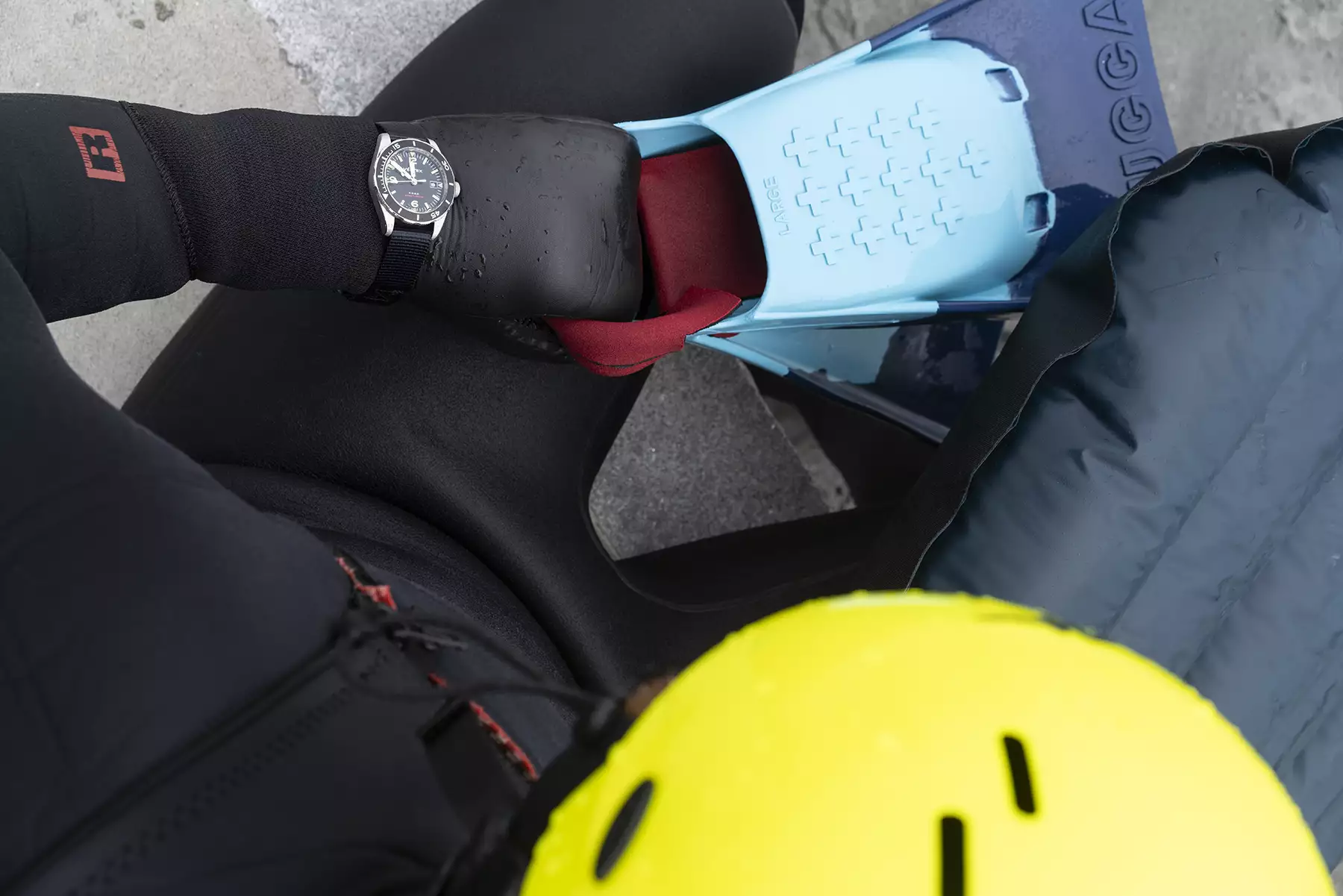
While I no longer live in my childhood home on the southern tip of Maine, it remains the best and most consistent break within a short drive of my house. Thirty minutes even in bad weather from my front door to the seawall overlooking the ocean. It had been over a month since I’d gotten in the water to mat surf prior to this weekend. A long dead period any time of year, but incredibly long for the winter.
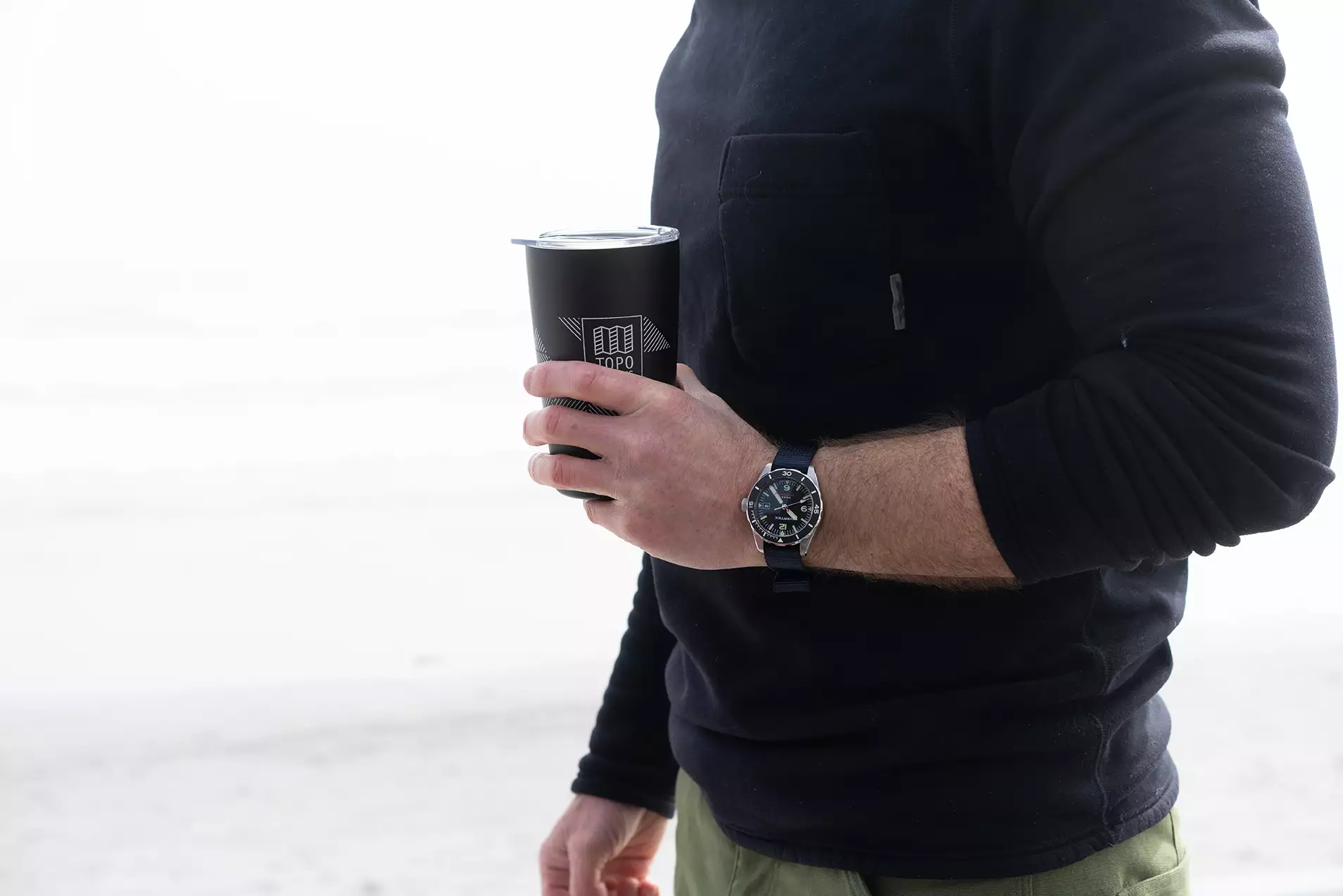
As with anything where you’ve taken a long(ish) hiatus, you worry about remembering everything both figuratively and literally. Will I remember the right position to ride my 4th Gear Flyer Omni vs the Tracker I used to ride, as their different inflation can impact the takeoff. Will I remember my Surf Ears ear plugs as I’d prefer not to get bone growth in my ears. (Look up Surfers’ Ear, it’s not fun.) My watch, this time a Vertex M-60 AquaLion, so I don’t lose track of time both for Zoom meetings, and for safety in the cold water. Slowtide’s heavy weight changing poncho to dry off and keep from flashing the beach getting in and out of the wetsuit. Will I remember my winter booties that don’t have holes in the toes. Coffee in an insulated mug for a pre and post surf boost. I try to mitigate these questions through preparation and consistency. Same gear, same bag, same process. Because without the right gear, surfing in sub 40 degree water just isn’t doable. All the gear is pretty much indispensable. It serves a purpose to enable or enhance each session in the water.
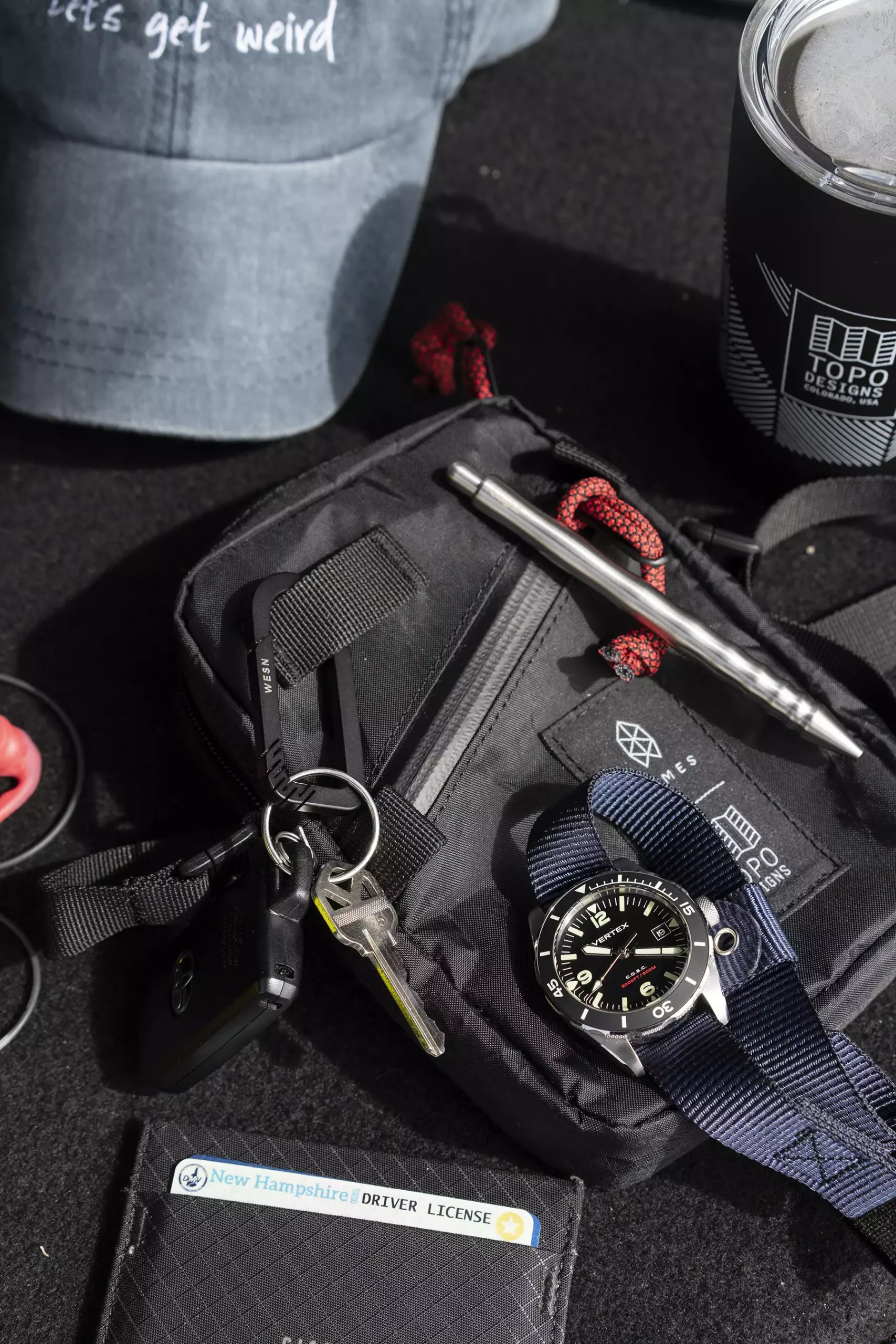
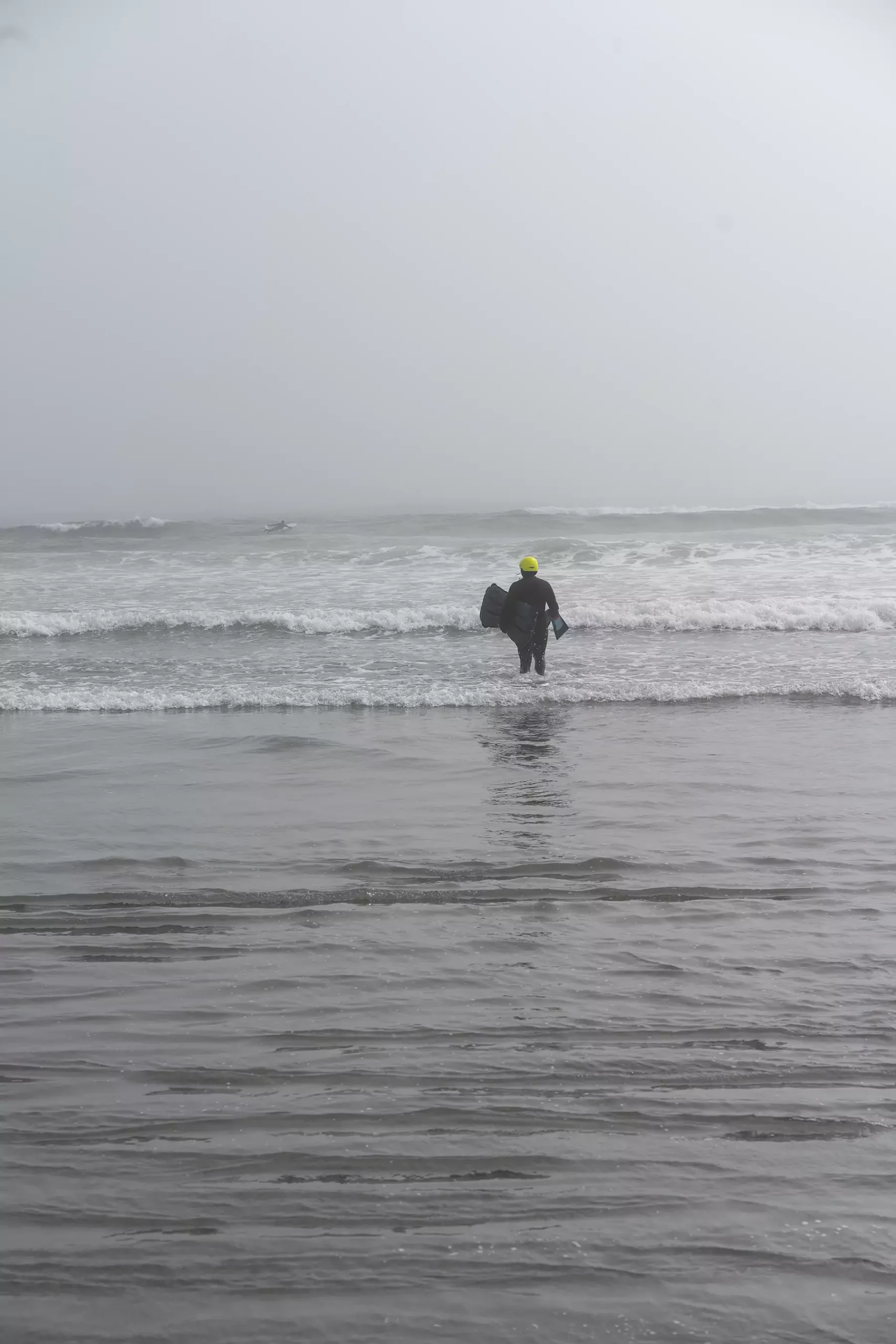
“Because without the right gear, surfing in sub 40 degree water just isn’t doable. All the gear is pretty much indispensable. It serves a purpose to enable or enhance each session in the water.”
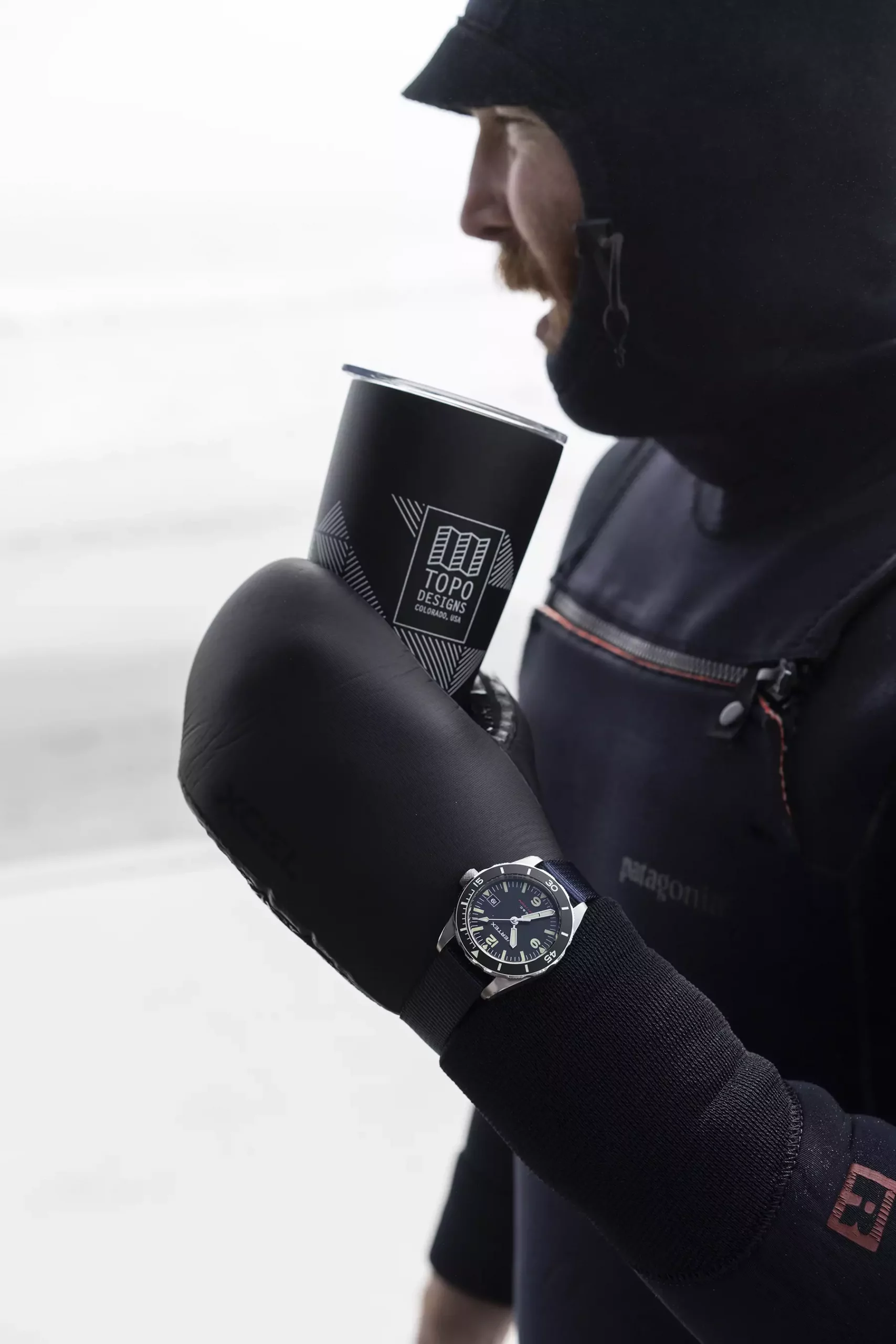
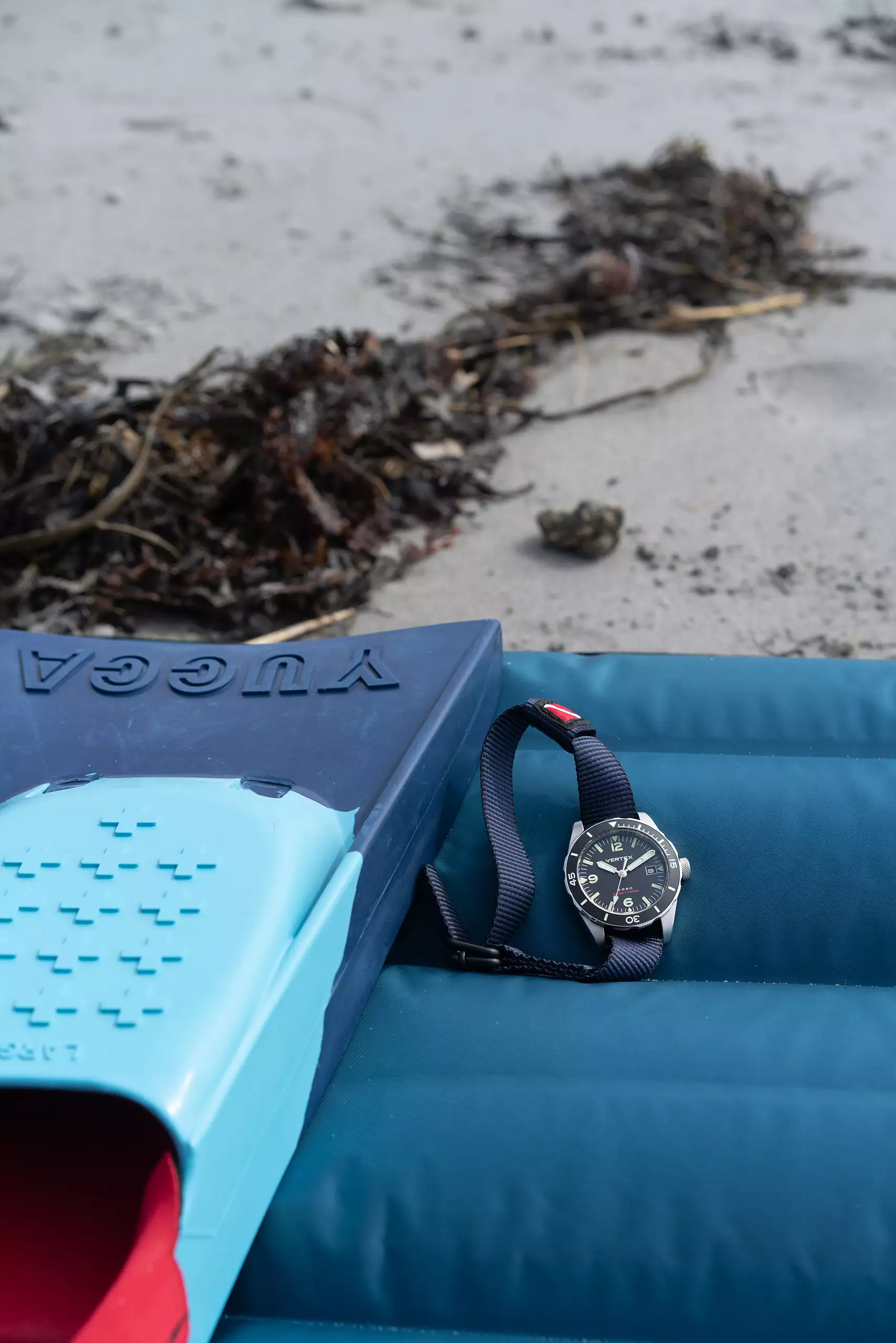
I suit up quickly after picking where I want to enter the surf. I double check I have everything again, and nothing critical is missing, just the changing mat so my feet will freeze getting my wetsuit off after the session, but that’s later. Stash my phone, wallet, and pocket stuff in a water resistant bag from The James Brand and Topo Designs. I’ve learned the hard way to keep the important stuff properly protected when soaking surf gear will be going into the car as “Water finds a way” is all too true. The Zulu Alpha strap that comes with the AquaLion is a great fit for over the wetsuit, sliding over the 7mm mitts the cold water temps still demand. As a UK dive watch, it’s certainly at home in the cold water. I think it would be fun to pair it in the future with a Cornish custom G-Mat from Graeme. One can hope. Keys get “hidden” in a wheel well. When my feet fit the water, I always stop and set my timing bezel so I know when I got in no matter how fuzzy my brain might get from the cold. As I stand there setting the bezel with satisfying clicks resonating through my mitts, I feel cold water trickling into my left bootie. Apparently now I have two pairs of booties with holes and not just one. It’ll insulate well enough for an hour though. Wading into the fog the world becomes a bubble that moves with me, visible only for a few hundred feet. The waves are always a welcome break from the world, but once I make it out into the lineup I can barely see the shoreline through the mist. It’s fine, the AquaLion will let me know when it’s time to return to the world. For now I’ll try and fly on top of the ocean. There aren’t many better ways to pass the time and wait for fog to burn off.
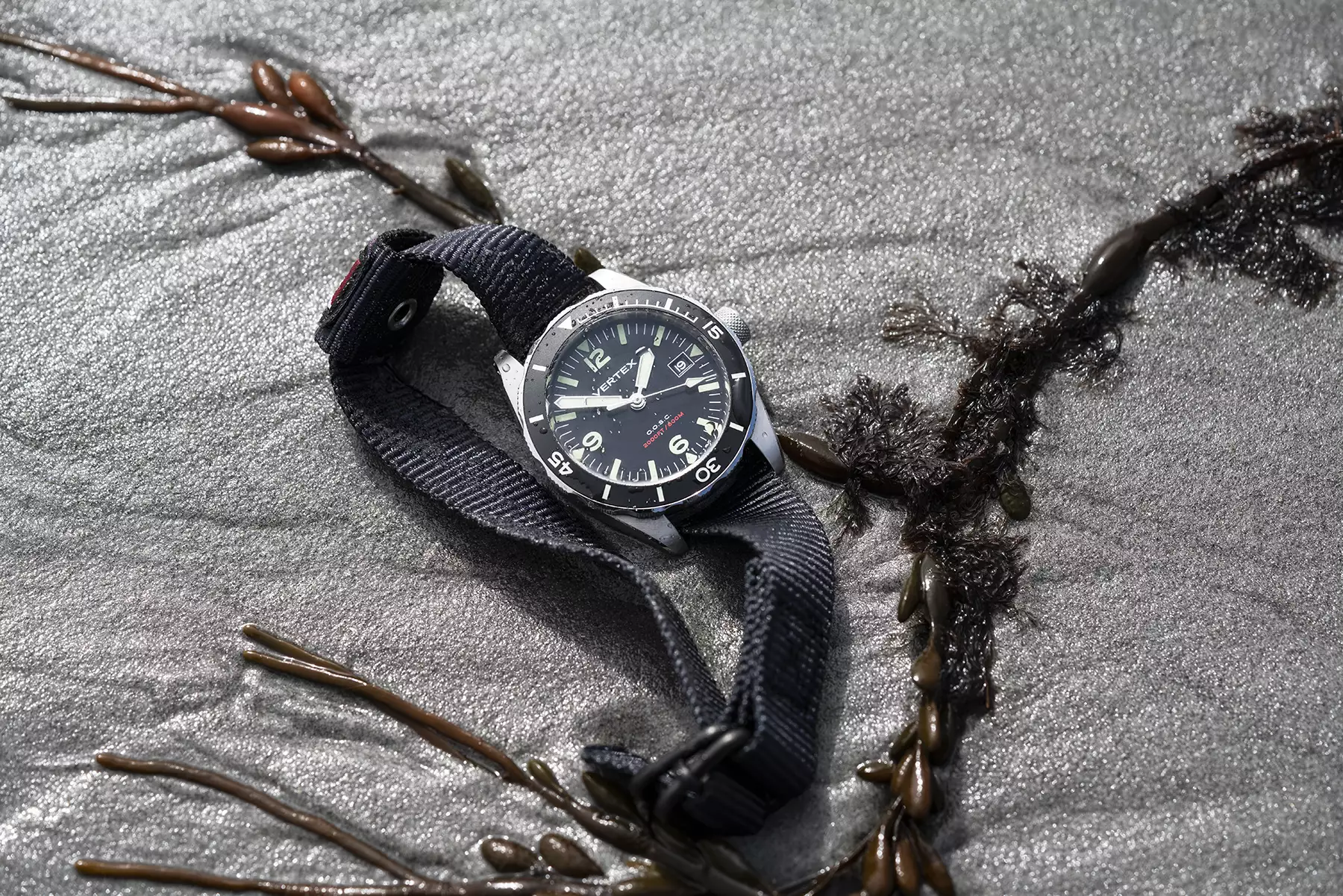
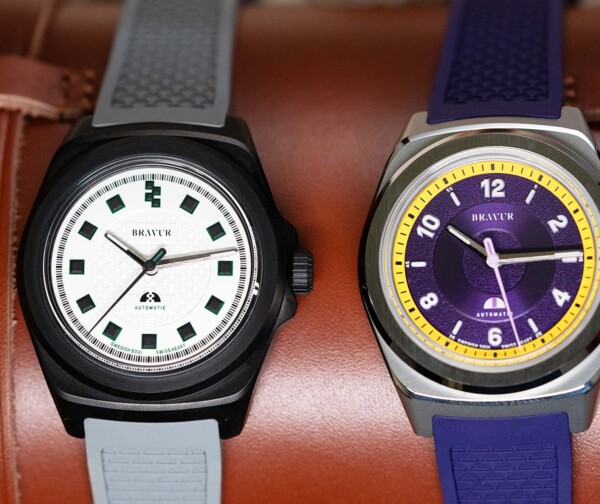




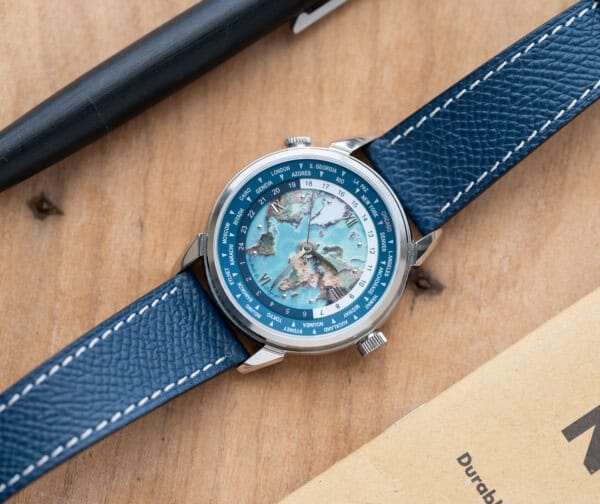



 Featured Videos
Featured Videos







